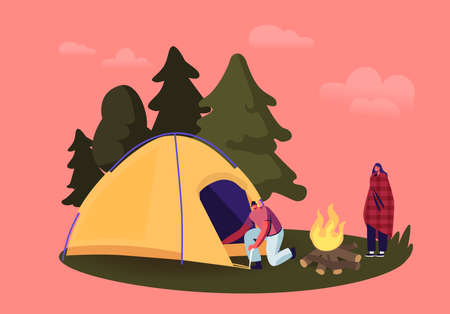Introduction: The Rockies’ Storied Past
The Rocky Mountains, often simply called “the Rockies,” stand as a breathtaking backbone of North America and a living testament to centuries of history. Stretching over 3,000 miles from northern British Columbia in Canada to New Mexico in the United States, these majestic peaks have shaped not only the landscape but also the unfolding story of the American West. For generations, Indigenous peoples thrived here, drawing on the land’s rich resources long before European settlers arrived. As explorers and pioneers pushed westward, the Rockies became both a formidable barrier and an essential gateway, influencing migration routes, trade, and settlement patterns. Today, every trail winding through this rugged range offers more than just natural beauty—it’s a chance to connect with a landscape woven deeply into the fabric of America’s past. Whether you’re hiking through alpine meadows or following ancient game trails, each step is an opportunity to learn about the Rockies’ unique role in history and their enduring significance in shaping Western culture.
Indigenous Footprints and Early Explorers
Long before the Rockies became a symbol of the American wilderness, Native American tribes made these dramatic landscapes their home. Tribes such as the Ute, Arapaho, Blackfeet, Shoshone, and Crow developed deep ecological knowledge that allowed them to thrive amidst rugged mountains, rushing rivers, and vast valleys. Their seasonal migrations, hunting practices, and spiritual connections to the land shaped not just their survival but also the ecology of the region. When hiking today’s trails, you’re often following paths that were first blazed by Indigenous peoples for trade, gathering, and storytelling.
Native American Tribes of the Rockies
| Tribe Name | Key Regions | Cultural Contributions |
|---|---|---|
| Ute | Colorado, Utah | Expert horsemen; known for basket weaving and beadwork |
| Arapaho | Wyoming, Colorado | Seasonal bison hunters; skilled in tipi construction |
| Blackfeet | Montana, Alberta (Canada) | Bison culture; renowned for oral storytelling traditions |
| Shoshone | Wyoming, Idaho | Adapted to both mountain and high desert life; famed for their tracking skills |
| Crow | Montana, Wyoming | Expert traders; important spiritual leaders in the region |
The Arrival of European Explorers
The Rockies later drew the curiosity of early European explorers. In the 1700s and 1800s, fur trappers like John Colter and pathfinders such as Zebulon Pike ventured into these wild frontiers. They relied heavily on Indigenous guides and knowledge for safe passage through unknown territory. These encounters were often complex—sometimes cooperative, sometimes fraught with misunderstanding or conflict—but they forever changed the cultural tapestry of the Rocky Mountains.
Legacy Along Today’s Trails
As you hike Rocky Mountain trails, look for interpretive signs and historical markers sharing stories of both Native Americans and early explorers. Many trail names honor these groups or commemorate significant events. By learning about their journeys and wisdom, every step becomes a connection to centuries of adventure and adaptation in one of America’s most iconic landscapes.

3. Ecology Along the Trail
Hiking through the Rockies is more than just a physical adventure—its an ecological journey through some of North Americas most diverse natural environments. As you walk along the trails, youll move through a mosaic of ecosystems, each with its own unique features and inhabitants.
From Alpine Meadows to Dense Forests
The Rocky Mountains stretch across multiple climate zones, which means youll encounter everything from windswept alpine meadows at higher elevations to dense coniferous forests further down. Alpine meadows are carpeted with wildflowers in late spring and summer, creating vibrant patches of color amid the rugged landscape. These areas are fragile and support specialized plants adapted to short growing seasons and harsh weather conditions.
Forest Ecosystems
Descending into the forests, youll find towering pines, spruces, and firs that create a cool, shaded environment. These forests act as critical habitats for many species and play a vital role in maintaining water quality by filtering runoff before it reaches rivers and streams. The understory is often alive with ferns, shrubs, and the occasional flash of berries—essential food sources for wildlife.
Wildlife Encounters
The Rockies are home to an impressive variety of animals. Keep your eyes peeled for mule deer grazing in clearings or listen for the haunting call of a distant elk. If youre lucky (and quiet), you might spot a black bear searching for berries or even catch a glimpse of a mountain goat navigating rocky slopes. Birdwatchers can delight in seeing majestic bald eagles soaring overhead or hearing the cheerful song of chickadees flitting among the branches.
As you hike, remember that these ecosystems are interconnected and delicate. Practicing Leave No Trace principles helps ensure that the beauty and diversity of the Rockies remain intact for future generations of hikers and nature lovers.
4. Human Impact and Conservation
As you explore the Rockies, it’s essential to recognize how human activities have left their mark on this majestic landscape. From early Native American settlements and fur trade routes to the boom of mining and railroads during westward expansion, people have long relied on the Rockies for resources and inspiration. However, these interactions have also brought challenges—deforestation, habitat loss, pollution, and the introduction of invasive species all pose threats to the region’s delicate ecosystems.
Shaping the Rockies: A Timeline of Human Influence
| Era | Key Human Activities | Ecological Impact |
|---|---|---|
| Pre-1800s | Native American land stewardship, hunting, gathering | Sustainable use, minimal ecological disruption |
| 1800s | Mining, railroad construction, logging, ranching | Deforestation, soil erosion, water contamination |
| 1900s–Present | Tourism, recreation, conservation initiatives | Habitat fragmentation balanced by restoration efforts |
The Push for Conservation
The realization that these mountains are not an inexhaustible resource led to landmark conservation efforts. The establishment of national parks like Rocky Mountain National Park in 1915 marked a pivotal step toward protecting large swaths of wilderness for future generations. Today, organizations such as the U.S. Forest Service and National Park Service work alongside local communities and Indigenous groups to restore habitats, manage visitor impact, and promote sustainable recreation.
Your Role as a Steward on the Trail
While hiking, each visitor has a role in preserving the Rockies. Staying on designated trails prevents erosion; packing out trash protects wildlife; respecting wildlife keeps ecosystems in balance. These simple actions help ensure that the beauty and biodiversity of the Rockies remain intact for all who follow in your footsteps.
5. Blend of History and Nature: Learning On the Move
Hiking in the Rockies offers a unique opportunity to immerse yourself in both the region’s rich history and its diverse ecology. To truly appreciate these trails, it’s helpful to intentionally blend your understanding of historical events with your observations of the natural world around you.
Tips for Connecting Stories and Science
Begin by researching the area before you set out. Many trailheads have interpretive signs or brochures that detail the cultural significance of the land—such as Native American heritage sites, mining relics, or pioneer routes. As you hike, pause at these landmarks to consider how people lived, traveled, and survived in these rugged landscapes. Notice how their choices were influenced by the surrounding environment, from river locations to forest resources.
Observe and Respect
Bring along a field guide or use an app to identify native plants and wildlife. As you spot a species, reflect on its role in local ecosystems as well as its historical uses by indigenous peoples or early settlers. For instance, ponder how bison migrations shaped both prairie ecology and indigenous hunting traditions. This active engagement deepens respect for both nature and those who came before us.
Enriching Your Hiking Experience
Share what you learn with fellow hikers—discuss legends tied to mountain peaks or point out ecological changes caused by past logging or wildfires. By weaving stories with science, you turn every step into a learning moment. Not only does this make your journey more meaningful, but it also fosters stewardship for these treasured landscapes.
6. Recommended Trails for History and Nature Lovers
If you’re eager to blend your love of history with a passion for nature, the Rocky Mountains offer some truly remarkable hiking experiences. Here are a few top trails where you can immerse yourself in both the region’s fascinating past and its breathtaking ecological diversity.
Bear Lake Trail, Rocky Mountain National Park
This accessible loop trail is a favorite for visitors of all ages. Along the path, interpretive signs highlight the area’s glacial history, while the lake itself offers serene views framed by ancient spruce and fir forests. Keep an eye out for mule deer and listen for Clark’s nutcrackers overhead.
Glacier Gorge Trail, Colorado
The Glacier Gorge Trail is not only renowned for its waterfalls and wildflower meadows but also serves as a living museum of geological history. You’ll traverse terrain shaped by glaciers thousands of years ago, with stops at Alberta Falls and Mills Lake that tell the story of the Rockies’ ever-changing landscape.
Ute Trail, Estes Park Area
This historic Native American trade route follows ridgelines once used by Ute peoples crossing the mountains. Hiking here, you’ll witness subalpine ecosystems up close—windswept tundra, stunted krummholz trees, and sweeping vistas where golden eagles soar.
Mesa Verde National Park Trails, Southwest Colorado
For a deeper historical immersion, head south to Mesa Verde. The park’s trails lead you to ancient Ancestral Puebloan cliff dwellings, offering an unparalleled look into human adaptation within the Rockies’ dramatic environment. The Petroglyph Point Trail is especially rewarding for both cultural insights and scenic overlooks.
Tips for Exploring Responsibly
Wherever you hike, remember to follow Leave No Trace principles: stay on designated trails, respect wildlife habitats, and leave historical artifacts undisturbed for future generations. By doing so, you’ll help preserve these treasures while enjoying your own journey of discovery.
Your Adventure Awaits
The Rockies’ trails are more than just pathways through nature—they’re corridors through time. Whether you’re captivated by ancient geology or stories of those who walked before us, these hikes promise an unforgettable way to learn as you explore.


